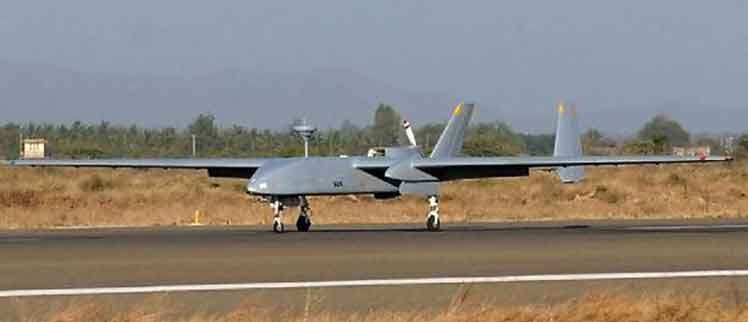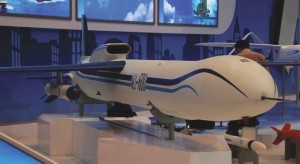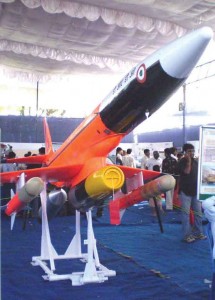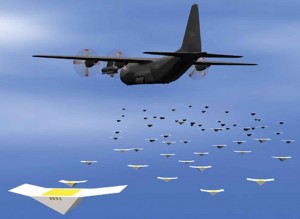Israel had the Scout in 1981, followed by the Searcher I and Searcher II and then the Heron. Israeli companies are manufacturing 35 different varieties of UAS. The Heron has a turbo-prop version named Eitan, which is as large as a Boeing 737. A resupply and medical evacuation compatible UAS called Air Mule is under testing. A mini UAS named Boomerang, powered by hydrogen fuel cells, with a loiter capability of nine hours will be employed for battlefield ISR. Hermes 450 is another UAS in production being employed for ISR. A larger version, the Hermes 900 has also been operationalised. Israel is a major exporter of UAS with its products being bought by India, China, South Africa and many other nations. UAS Heron was operationalised in India before these were inducted into the Israeli forces. The Searcher II was imported by India in 1996 for ISR. Today the Indian Army, Navy and the Air Force operate this UAS.
Unmanned Aerial Systems in Asia
China, the newest but fastest entrant in the development of UAS programmes. The rapid pace of UAS development by China’s aerospace industry could be gauged by the display of 25 different types of UAS at an Air Show at Zhuhai in end-2010. This display included many UCAVs and one powered by a jet engine.
Actual artificial intelligence is not a major aspect of UAV research.
China first displayed its fledgling UAS capability as late as 2006 and the display of 25 models in 2010 is an indication that China is attempting to catch up with USA and Israel in developing technology that is considered the future of military aviation. As is evident in many other Chinese endeavours, there is a focussed and time-bound approach to this development programme also, with clearly laid-down objectives.
The Chinese UCAS WJ600 is powered by a jet engine capable of achieving higher speeds than the propeller driven Predator and Reaper. It is part of China’s plan to develop a variety of Medium Altitude Long Endurance (MALE) and High Altitude Long Endurance (HALE) UAS, which when deployed would expand PLAAF’s options for long-range reconnaissance and strike.
Apart from the WJ600 UCAV, on display at the Zhuhai Air Show was the large ASN 229A Reconnaissance and Precise Attack UCAV with a radius of action of 2,000 km. In July 2011, it was reported by US intelligence that China has a large UAS with a cruising altitude of 60,000 feet and a radar surveillance range of nearly 500 km. This UAS, with possible stealth properties, could be the targeting node for Chinese anti-ship ballistic missiles designed to neutralise the advantage the US Navy has in terms of aircraft carriers.
Pakistan has an array of drones for target towing and is now developing the Uqaab Tactical UAS. It can be assumed that Pakistan will be assisted by China in its quest for UAS technology.
The rapid pace of UAS development by China’s aerospace industry could be gauged by the display of 25 different types of UAS at an air show at Zhuhai in end-2010.
India has been a laggard in the race to develop UAS. Currently, India has the Searcher MkII and Heron for ISR. The Army, Navy and IAF have employed the Searcher while only the Air Force operates the Heron. The Indian military is employing these systems for operations, disaster management and aid to civil power.
The Lakshya drone, a DRDO/HAL product is used mainly for target towing. Nishant UAV, when operationalised, will also be used for target towing. The Lakshya II is currently undergoing trials that include rapid descent from altitude to 15 metres over sea, fly for a specified time before climbing away, all the time carrying two tow targets. The Rustom, a UAS under development at NAL, is a MALE twin-engine system for surveillance and reconnaissance missions. With a planned endurance of 14 hours and maximum altitude capability of 26,000 feet, it will eventually replace the Heron UAS. Three versions of Rustom are planned of which Rustom-I will be a tactical UAS with endurance of 12 hours, while Rustom-H will be larger vehicle with endurance of 24 hours. Rustom-C will be a UCAV with a 20-metre wing span and endurance of 24 hours at a station 1,000 km away while flying at 30,000 feet. Mini and micro UAS, Black Kite, Golden Hawk and Pushpak are also undergoing flight trials. Two mini UAS for ISR, the Sly Bird and Imperial Eagle, both under two-kg weight category are also being tested.
Also on the cards is the Gagan Naval Rotary UAV being jointly developed by India and Israel. Built on a Chetak helicopter platform, this ISR mission UAS can loiter for six hours at a distance of 120 km from the launch ship. India’s DRDO also plans to collaborate with Israel/others to develop solar-based UAS and mini/micro UAS for battlefield employment. DRDO is reported to be developing the Autonomous Unmanned Research Aircraft (AURA) for the IAF. It will be a tactical stealth aircraft-wing concept built mainly with composites, powered by a turbo-fan engine with laser-guided strike weapons carried internally.
India’s operational UAS are the Searcher II and Heron procured from Israel and employed by the Air Force, Army, Navy, R&AW and other security agencies. These have been acquired individually by each user under different protocols. Till recently, there has been no assessment of the actual requirements of UAS. There is no policy or vision which guides these purchases resulting in wastage of resources. India has a large land border and an even larger coastline and hence needs a large number of UAS. The security requirements of intelligence, surveillance and reconnaissance along the national boundaries are immense and UAS are ideally suited to these missions. There are also internal policing requirements in militancy areas, for crowd management and for disaster management. All these requirements have to be worked out to arrive at the numbers of the UAS to meet overall national commitments. From this would flow a national policy of what and how much to buy to meet immediate needs and what action plan our DRDO and defence industry including private enterprise, have to formulate to meet future UAS requirements. In the absence of such an approach, individual agencies, be they military or civil, have purchased expensive systems based on their own narrow perspectives. Often the downstream requirements of second and third line maintenance have been overlooked or casually worked out resulting in additional wasteful expenditure apart from long down-time of the machines.
Future Course
The scope for employment of the UAS has increased exponentially and will continue to do so along with developments in navigation and sensor technology. Recently, the US demonstrated how a sensor can be placed at a location of choice through a system of balloons and UAVs. A Close-In Covert Autonomous Disposable Aircraft (CICADA) vehicle was dropped from another airborne platform. It flew to the selected point, entered an orbit and descended till it reached the ground. In this experiment, sensors were placed within 15 feet of their intended location. While the sensors were small in size, with refinement in technique, it would be possible to drop/place larger loads.
Many of India’s UAS programmes are still on the drawing board while other countries are refining their inventories.
During the Kargil War, the IAF was keen to position a small radar near Kargil town but the complicated logistics of this exercise resulted in the radar reaching the site after the hostilities ended. A UAS-aided autonomous deployment would have been ideal for the situation at Kargil. Similarly, many a time, weather prevents manned aircraft from reaching the Leh sector resulting in disruption of supplies. If, in future, UAS of the Air Mule or the rotary wing K-MAX variety were to be employed, then low clouds or poor visibility would cease to be the cause of mission aborts.
Many of India’s UAS programmes are still on the drawing board while other countries are refining their inventories after accumulating hours of experience and mission successes. While DRDO’s plans are certainly laudable, they have in the past generally promised much but delivered little. Whether this is because of a lack of focus or the want of an environment of scientific temper in the various units of DRDO, is a problem that needs to be understood and tackled. But the relentless march of technology will not await bureaucratic sloth. A recent report that India is going in for purchase of 1,500 UAS in the next four to five years is an indication that decision-makers are alive to the capabilities of the UAS. While indigenous capability building is important, it is equally important to plug the existing gaps in our security framework.
The latest US Military Strategy talks of reduction in manpower, emphasis on ‘special operations’ and increased reliance on unmanned systems to meet its global military commitments. While India’s strategic requirements may be different, the increasing importance of unmanned systems cannot be denied. The IAF should create a branch specific to UAS operations. Today’s generation is adept at computer gaming and the IAF must tap this ability to induct proficient young candidates into the UAS stream. It would be advantageous to create a UAS training centre for trainees of all the three services. The manned aircraft will continue for the foreseeable future but many of its existing roles and missions would be undertaken by the UAS. The oncoming UAS wave cannot be denied its rightful pre-eminence in military aviation and India would do well to hitch its wagon onto this sunrise technology.
Notes
- ‘US Unmanned Aerial Systems’ by Jeremiah Gertler of the Congressional Research Services.
- Wikipedia: Unmanned Aerial Systems.
- Article on Indian UAVs by Dr Somnath.









It was a good read